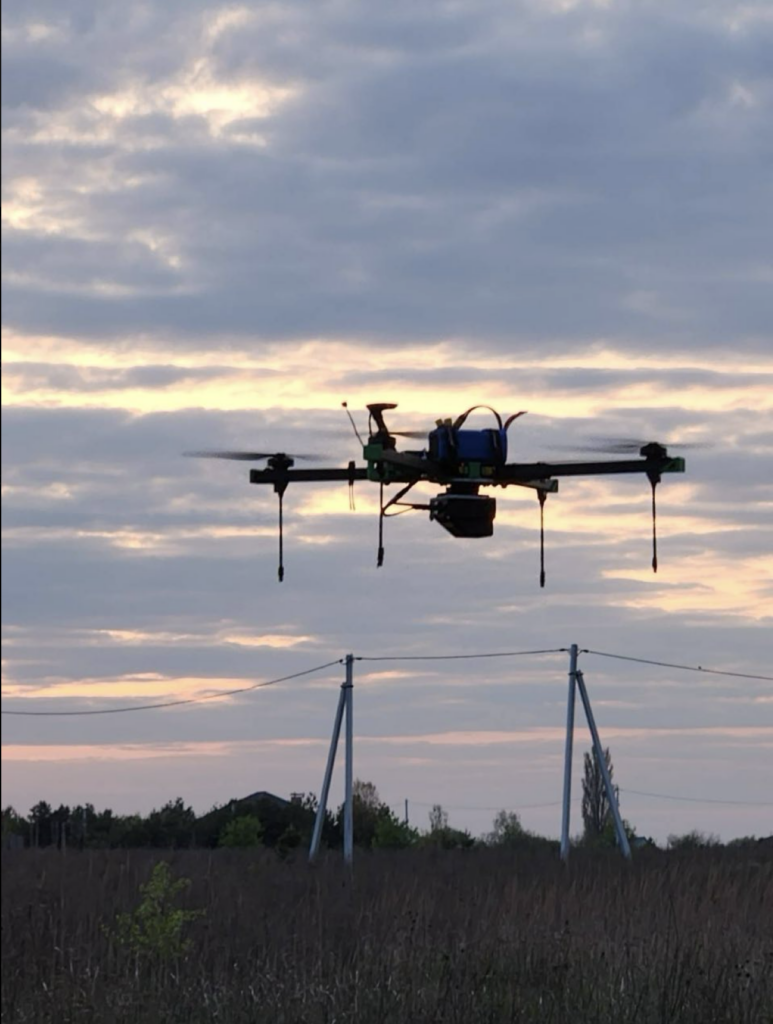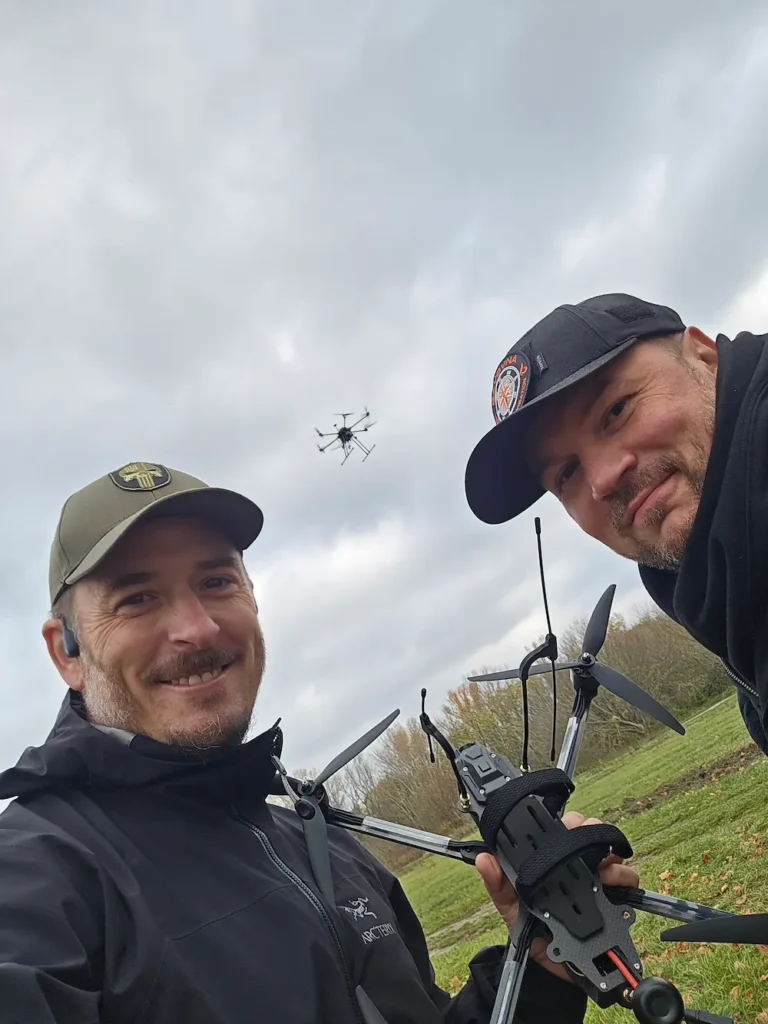In the heart of Eastern Europe, a technological revolution continues unfolding amidst the chaos of conflict. The Ukraine-Russia war has become a crucible for innovation, particularly in the realm of unmanned aerial systems (UAS) and electronic warfare (EW). A recent panel discussion at the UAS Summit brought together experts with firsthand experience from the Ukrainian frontlines, shedding light on the profound implications for future battlefields and homeland security.
The Frontline Innovators
Bill Daggett, CEO of Delta Advisory Group, moderated the discussion, drawing from his extensive UAS industry experience. Olga Pogoda, COO of KEF Robotics, shared her personal connection to the conflict and her company’s work in visual navigation and autonomy for aircraft. She explained, “The conflict in Ukraine is very personal to me. My family’s from Ukraine. I was born in Belarus. I spent every summer in a town that literally no longer exists anymore.” Bryan Sardoch, owner of Kodachi Solutions and Director of Safety and Defense at Bavovna.ai, described Bavovna’s origins using AI to overcome GPS jamming in Ukraine. Sardoch’s involvement in Ukraine includes troubleshooting early poor performance of some US drones early in the full scale invasion. Mark Lindquist, a U.S. Air Force veteran, shared his experience as an independent volunteer bringing supplies, drones, jammers, vehicles, medical supplies over to the Ukrainian army since 2022.
The Rise of Decentralized Defense
One of the most striking revelations from the panel was the emergence of a decentralized approach to military technology in Ukraine. Brigade commanders are forging relationships with local tech startups, bypassing traditional bureaucratic channels to quickly obtain tailored solutions for their specific battlefield needs. This agile approach has led to a proliferation of what Lindquist described as “800 different Ukrainian armies fighting Russia,” each with its own unique technological edge.

Innovation at Warp Speed
The pace of innovation in Ukraine has been nothing short of extraordinary. Sardoch highlighted the rapid cycle of development and counter-development between Ukrainian and Russian forces, with new technologies and tactics emerging in as little as two to three weeks. This breakneck speed of adaptation far outpaces the traditional development cycles of Western militaries and defense contractors, posing both opportunities and challenges for the future of warfare.
Navigating the GPS Battlefield
As the conflict intensifies, the importance of GPS navigation in modern warfare has come to the forefront. Pogoda emphasized the critical challenges posed by jamming and spoofing, which affect not only military operations but also civilian applications and commercial air traffic. The proliferation of jamming techniques has spurred the development of GPS-denied navigation solutions, a field that companies like KEF Robotics have been exploring since well before the conflict began.
The Electromagnetic Chess Game
The dynamic nature of electronic warfare in Ukraine has turned the conflict into a high-stakes game of electromagnetic chess. Sardoch explained how the enemy can gather intelligence on troop movements and locations by analyzing the electromagnetic spectrum emitted by modern technologies. This constant cat-and-mouse game between drone operators and electronic warfare units is driving rapid innovation on both sides, with multi-sensor fusion technologies emerging as a potential solution to operate effectively in GPS-denied environments.

Drones and Artillery: A Deadly Duet
While drones have captured the public imagination, the panel emphasized that traditional weaponry still plays a crucial role in modern warfare. Sardoch astutely observed that while full person view (FPV) drones may be moving the front lines, it’s ultimately artillery fire that determines territorial control. This insight underscores the complex interplay between new and traditional technologies on the modern battlefield.
The Reality Check: When Tech Fails
The panelists didn’t shy away from discussing the harsh realities of equipment failure in combat situations. Sardoch expressed frustration with manufacturers who overpromise and underdeliver, potentially putting lives at risk when equipment fails to perform as expected under battlefield conditions. These concerns highlight the critical need for rigorous testing and validation of military equipment in realistic combat scenarios.
From Garage to Battlefield: The Scaling Challenge
The panel discussed the rapid evolution of warfare technology in Ukraine, noting the transition from small-scale, “garage” innovations to more industrialized production processes. This shift has presented both opportunities and challenges, as companies like KEF Robotics have had to adapt quickly to meet the urgent demands of the conflict while maintaining quality control and long-term sustainability. Pogoda explained how her company, KEF Robotics, had to adapt quickly to meet the demands of the conflict. “We went from developing prototypes to full-scale production in a matter of months. The urgency of the situation demanded it,” she said. The speakers agreed that this rapid scaling of technology production presented both opportunities and challenges. While it allowed for quick deployment of new solutions, it also raised concerns about quality control and long-term sustainability.
The Double-Edged Sword of Technology
As the reliance on technology in combat zones increases, so do the associated risks. The panelists noted that even seemingly innocuous devices like fitness trackers can compromise troop movements. Sardoch stressed the importance of operational security, stating, “Every electronic device is a potential vulnerability. We’ve had to completely rethink how we use technology in the field.” This has led to a reevaluation of how technology is used at every level of military operations, with strict protocols and enhanced cybersecurity measures becoming essential. Lindquist added his observations, noting, “The Russians are actively exploiting any electronic footprint they can detect. It’s forced a reevaluation of how technology is used at every level of operations.”

Bridging the Information Gap
The complexities of information sharing and collaboration in the context of the Ukraine conflict emerged as a significant challenge. The panelists highlighted the delicate balance between sharing crucial information and maintaining operational security. Sardoch emphasized the need for improved communication channels. He said, “We’ve had to develop new protocols for sharing time-sensitive information without compromising security. It’s an ongoing challenge.” Linquist emphasized the need for improved communication channels to maximize the impact of technological and logistical support efforts. “The decentralized nature of the support efforts can lead to duplication of work or missed opportunities. We need better coordination mechanisms.”
Adapting to the New Face of War
The conflict in Ukraine is forcing militaries worldwide to reevaluate their approach to emerging technologies and unconventional tactics. The panelists noted a growing gap between the pace of technological innovation and the ability of traditional military structures to adapt. Pogoda noted that the need for adaptation goes “beyond just Ukraine.” Lindquist shared his observations on the ground, stating, “The Ukrainian forces have shown remarkable adaptability, but it’s clear that traditional military structures are struggling to keep up with the rate of change.” These realizations will likely to lead to significant shifts in military doctrine and training practices globally, with a greater emphasis on flexibility, technological literacy, and rapid adaptation to new threats.
The Future of Defense Tech
As the conflict continues to evolve, so does the landscape for defense tech startups in Ukraine. The panelists discussed the surge of interest from foreign investors and governments, while also highlighting the challenges of securing funding and scaling operations in a war zone. Sardoch highlighted the role of international support, explaining, “We’ve seen a surge of interest from foreign investors and governments, but navigating the complex regulatory environment remains a significant hurdle.” Lindquist noted “The ingenuity and determination of Ukrainian startups are remarkable. They’re developing cutting-edge solutions with limited resources.” The speakers agreed that sustained support and investment would be crucial for these startups to scale and make a lasting impact on the future of warfare.
The Future of Warfare: Lessons from Ukraine’s Technological Innovations in Combat
The Ukraine-Russia conflict has become a crucible for technological innovation in warfare, reshaping our understanding of modern combat. From the rise of decentralized defense strategies to the rapid evolution of drone and EW capabilities, the lessons learned on the Ukrainian frontlines will undoubtedly influence military doctrine and technology development for years to come. As the world watches this conflict unfold, two things are clear: the future of warfare is being written today in the skies and on the ground of Ukraine and we need to adapt.

